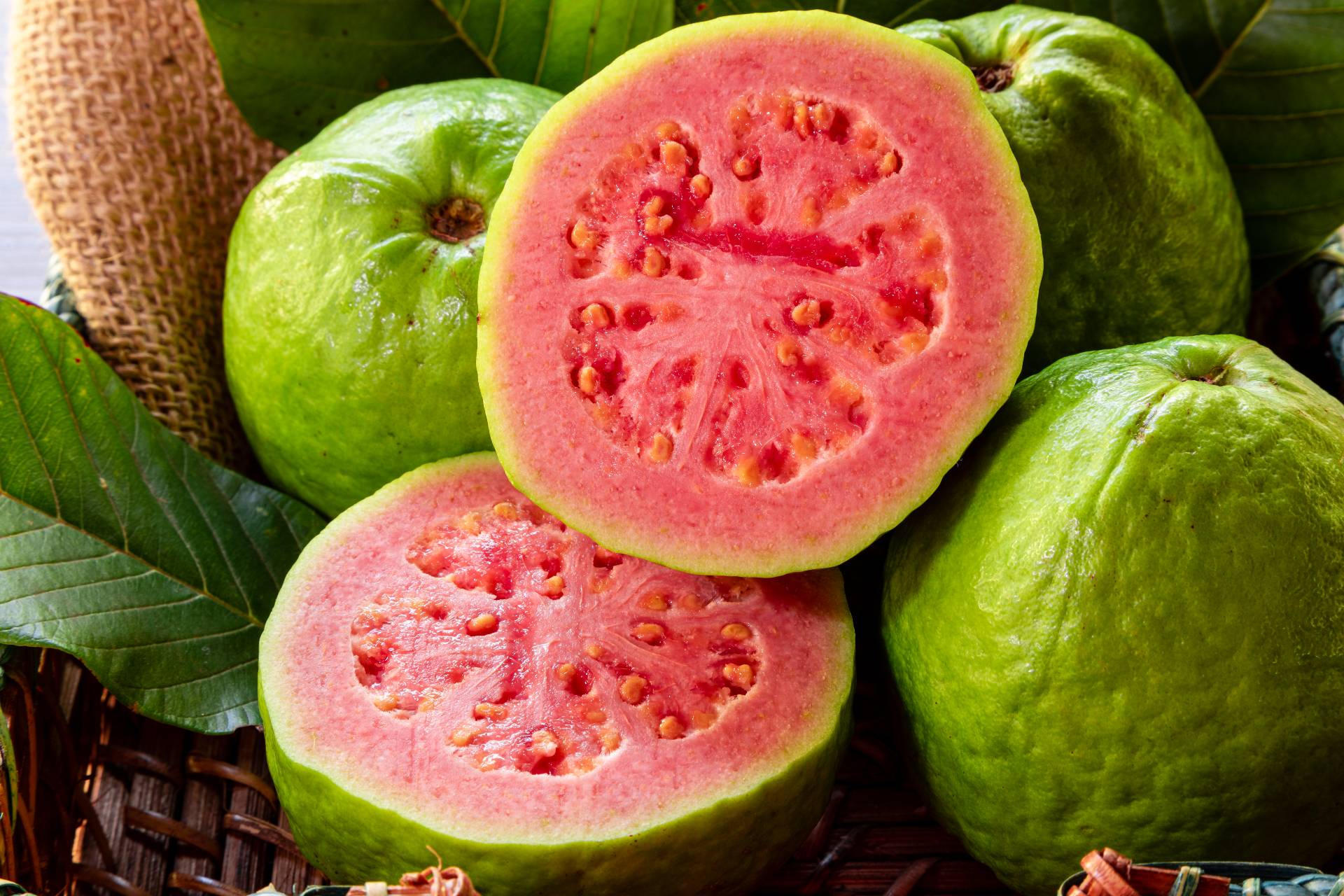Vietnamese guava, with its vibrant taste and rich nutritional profile, has become a culinary delight enjoyed in a variety of dishes worldwide.
Vietnam is a tropical haven renowned for its rich cultural tapestry, breathtaking landscapes, and, of course, its abundance of delectable fruits. As we traverse through this vibrant land, one fruit that captures the essence of its tropical allure is the Vietnamese guava. This fruit stands out as a culinary gem, offering a tantalizing symphony of flavors.
1. Features and health benefits of Vietnamese guava
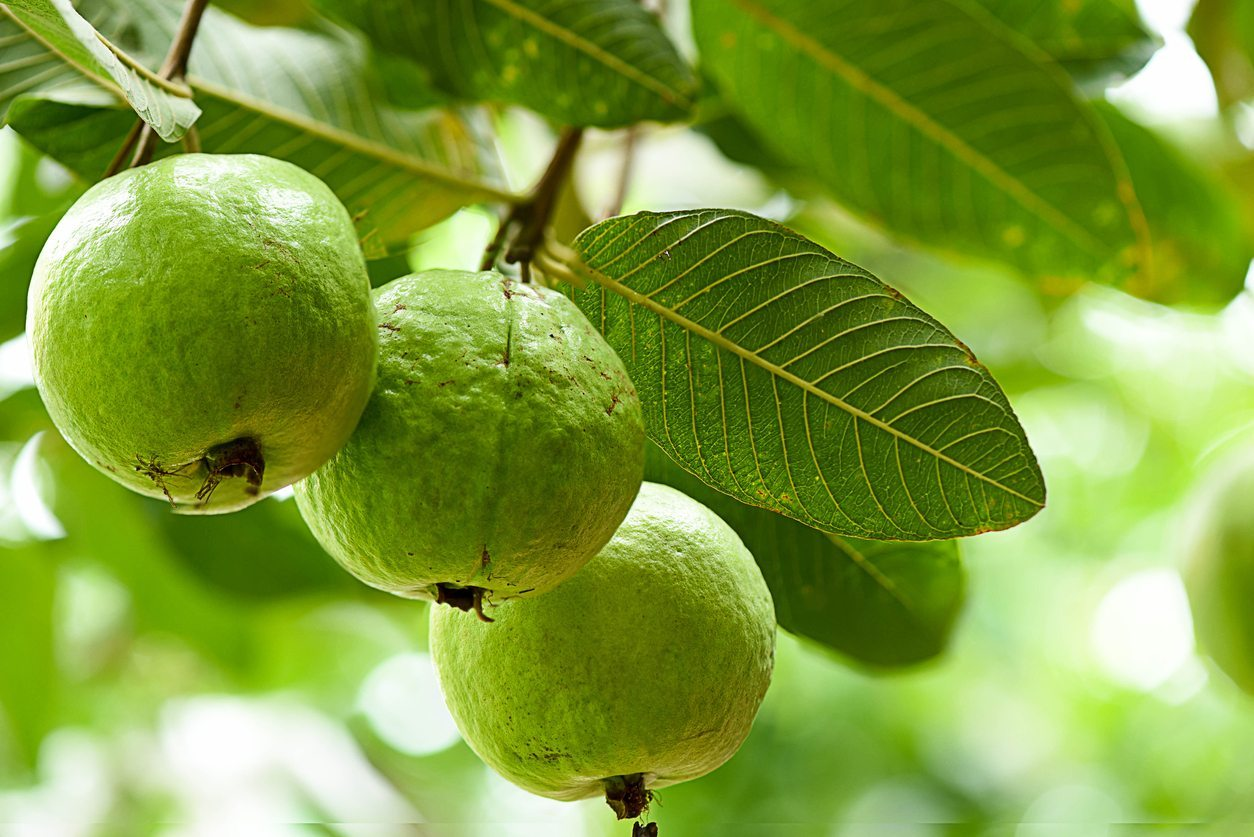
The guava tree, scientifically known as Psidium guajava, is also commonly referred to as the Asian guava. Its fruit is round, oval, or pear-shaped, ranging from 3 to 10 cm, depending on the variety. The unripe fruit is green, turning yellow when ripe, with white, yellow, or red flesh and a unique sweet or sweet-sour taste.
Not only do they taste wonderful, Vietnamese guavas boast plenty of health benefits, some of which include:
- Boosting the immune system: With its high vitamin C content, Vietnamese guava strengthens the immune system, preventing common illnesses such as colds and other infections.
- Skin care and anti-aging: Guava, rich in vitamin C, stimulates collagen production, enhancing skin elasticity and combating the aging process.
- Supporting endocrine functions: Guava’s significant copper content aids in hormone production and absorption, contributing to improved endocrine functions.
- Reducing high blood pressure: The fiber in guava helps improve blood pressure levels and lowers LDL cholesterol, reducing the risk of cardiovascular diseases.
- Weight management: Guava, low in fat, is a great choice for those looking to manage their weight. Additionally, the presence of lycopene in guava effectively combats obesity-related health issues.
2. Popular types and prices of Vietnamese guava

Visitors to Vietnam may be overwhelmed by the many varieties of guava on the market, each with different characteristics and flavors. Let’s take a closer look at some of the most famous types of guava in Vietnam and their prices:
- Taiwanese pear guava: Originating from Taiwan, this guava variety has become popular in Vietnam due to its vigorous growth and consistent fruiting. Resembling a pear in shape with smooth, light green skin, the Taiwanese pear guava offers sweet, refreshing white flesh and a distinctive aroma. Taiwanese pear guavas are commonly sold at around 25,000 VND per kilogram.
- Queen guava: Highly favored since its introduction to Vietnam, the Queen guava stands out for its large, round fruits with thick, seedless flesh—praised for its refreshing and subtly sweet taste. Typically, a kilogram of Queen guavas costs approximately 40,000 VND.
- Xa Li guava: Also known as forest guava or “sẻ” guava, Xa Li guava is nutrient-rich, low in fat, and boasts high nutritional value. With its strong growth characteristics, it is widely cultivated in Vietnam. Its appearance is slightly similar to a pear with smooth green skin, and the red-fleshed guava offers a sweet and slightly tart taste. You can easily purchase Xa Li guava at local fresh markets for about 55,000 VND per kilogram.
- Dong Du guava: Considered a specialty from Dong Du, Hanoi, this guava, also known as “four-season guava” or “găng” guava, features small, round fruits with longitudinal ridges. It is believed that the more ridges, the crisper and tastier the flesh is. When ripe, it turns white-yellow with a sweet and fragrant flavor. Dong Du guavas are widely available at approximately 20,000 VND per kilogram.
3. Culinary uses of Vietnamese guava
In addition to being enjoyed fresh without any seasoning, guava can be creatively incorporated into various culinary delights.
3.1. Vietnamese guava juice
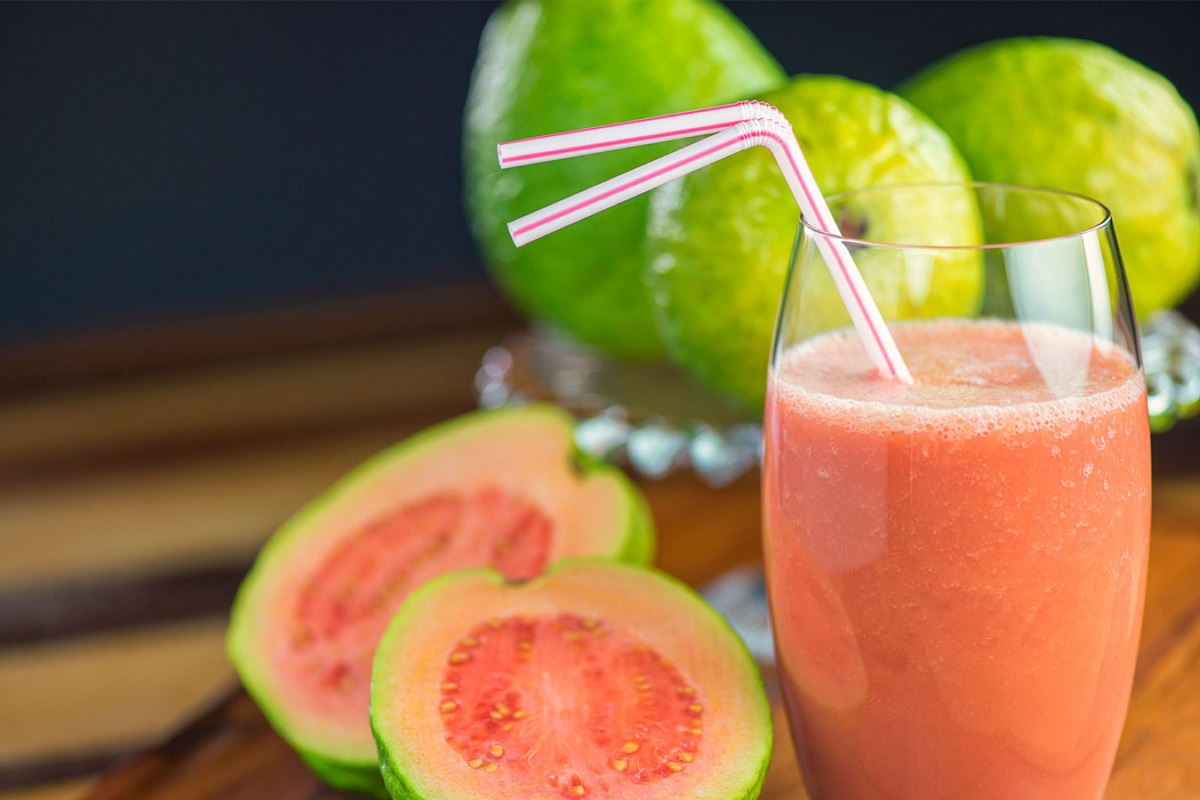
Vietnamese guava juice is a simple yet enticing beverage, bursting with the natural sweetness and unique aroma of guavas.
Ingredients:
- 3 ripe guavas
- 4 teaspoons of sugar
- A pinch of salt
Instructions:
- Soak the guavas in a diluted saltwater solution for about 15 minutes, then rinse them thoroughly. Let them drain before slicing.
- Cut the guavas into small slices, remove the seeds, and place them in a large bowl.
- Add 3 teaspoons of sugar, mix well to evenly coat the guava slices with sugar, and let sit for 10 minutes.
- After marinating the guavas, place them in a fruit juicer, extract the juice, and strain to obtain the juice.
- Add 1 teaspoon of sugar and half a teaspoon of salt to the guava juice. Stir well until the sugar is completely dissolved.
- Finally, add a few ice cubes to the glass, and you can optionally garnish with a sprig of mint for a visually appealing touch.
3.2. Vietnamese guava tea

Vietnamese guava tea, typically made with pink guavas, is the perfect summer drink that is both healthy and heavenly delicious.
Ingredients:
- 10g jasmine tea
- 200ml hot water
- 20ml pink guava jam
- 15ml Korean sugar syrup
- 10ml lime juice
- 250g ice cubes
- Decoration: pink guava, fresh lime, mint or basil
Instruction:
- Wash the guavas and cut them into thin slices. You can either leave the skin on for added texture or peel them for a smoother brew.
- Place the guava slices in a teapot or mug. Pour the hot water over them and let them steep for 5–10 minutes, depending on your preferred strength. The longer you steep, the more intense the guava flavor will be.
- Once steeped, strain the tea into a cup and add honey or sugar to sweeten the tea to your taste.
- If you’re feeling adventurous, try adding a touch of ginger, mint leaves, lemongrass, or lime juice for extra depth and complexity.
3.3. Vietnamese guava shake
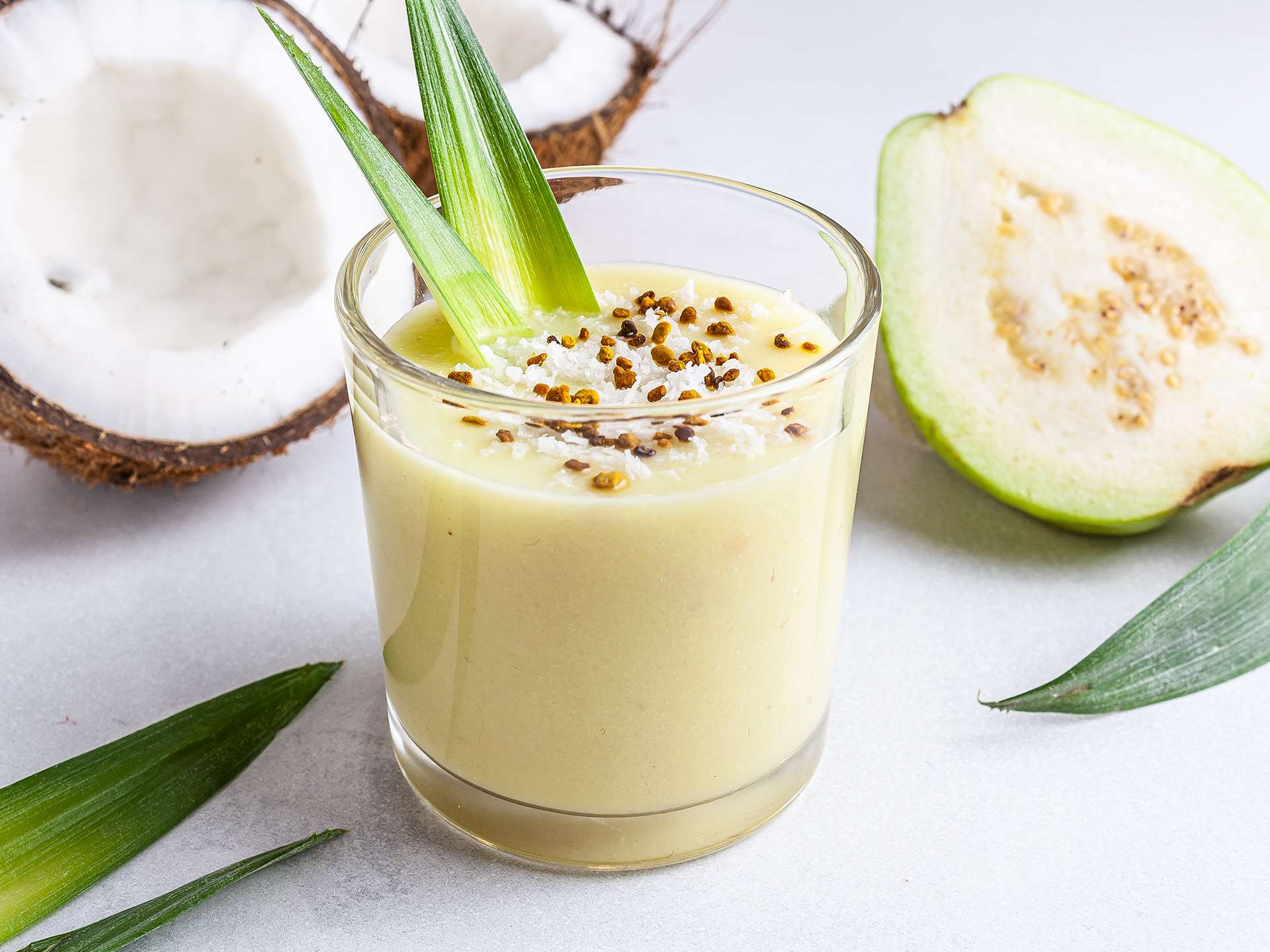
Follow these simple steps to create a fruity and spicy snack that captures the essence of Vietnamese street food pleasures.
Ingredients:
- 1 guava
- 1 tablespoon yellow sugar
- 1 tablespoon white sugar
- 2 tablespoons fish sauce
- 1 teaspoon chili powder
Instructions:
- Wash the guava thoroughly, remove the core, and cut it into bite-sized cubes.
- In a bowl, mix together the yellow sugar, white sugar, and fish sauce. Stir until the sugar is completely dissolved.
- Place all guava cubes into a small container. Add the prepared fish sauce mixture and chili powder to the container.
- Close the lid tightly and shake well to ensure the guava absorbs the flavors.
3.4. Vietnamese guava salad

Among all the delectable and refreshing Vietnamese salad dishes, Vietnamese guava salad stands out with its harmony of flavors—savory, sweet, and tangy.
Ingredients:
- 3 green guavas
- 200g tiger shrimp
- 100g bacon
- 1 yellow lemon, 2 green chilis, 2 horn peppers
- Fried shallots, mint, white sesame seeds
- Salt, sugar, pepper, cooking oil, mayonnaise sauce
Instructions:
- First, prepare the ingredients. Wash, slice guavas, and zest the yellow lemon. Then, clean and devein the shrimp and cut the bacon into small pieces.
- Marinate the guava with sugar; drain the excess liquid.
- In a hot pan, roast the shrimp, peel them, and split them in half.
- Sear the bacon until golden.
- To make the dressing, combine lemon juice, sugar, salt, zest, and crushed green chili.
- Layer guava, shrimp, and pork. Pour in your dressing, add mint and horn peppers, and give it a good toss.
- Serve the salad on a plate. Drizzle it with mayonnaise and add garnishes to your preference.
3.5. Vietnamese guava jam
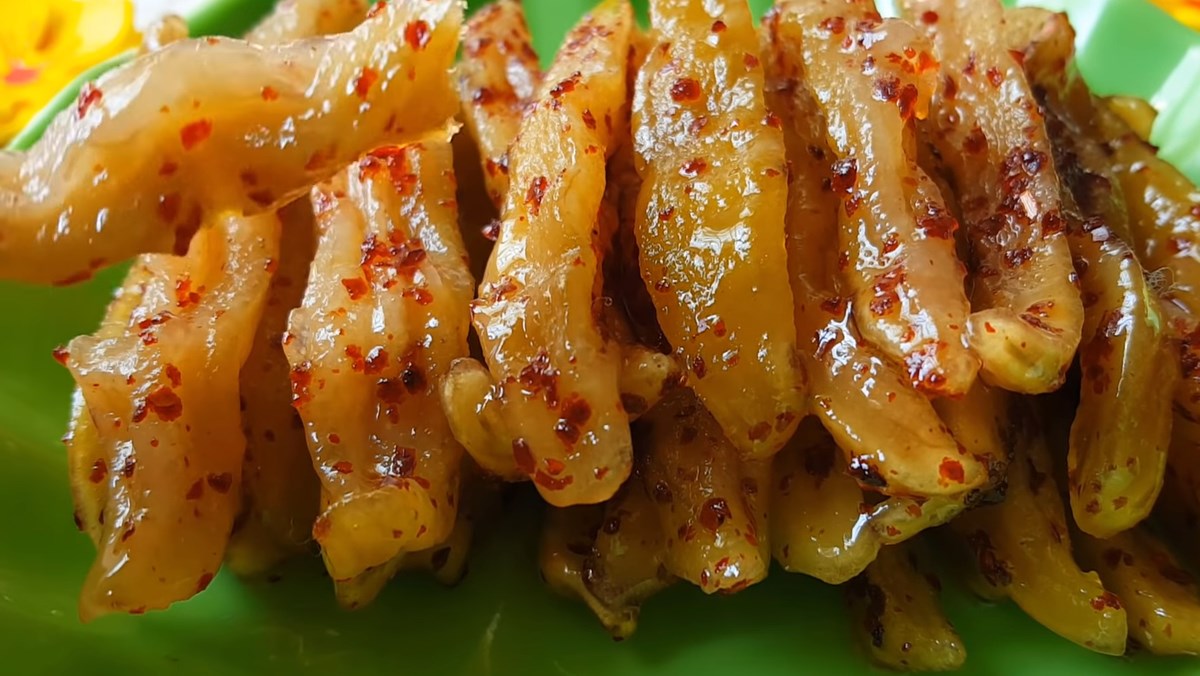
This homemade delight captures the essence of ripe guavas, preserving their natural sweetness in a delightful spread. Follow these simple steps to create a luscious jam that can be enjoyed on toast, paired with cheeses, or incorporated into a variety of dishes:
Ingredients:
- 1 kg guavas
- 1 lemon
- 400g sugar
- 1 tablespoon chili powder
- 1/2 teaspoon salt
Instructions:
- Prepare the ingredients
- In a bowl, mix cold water with salt and the juice from half a lemon.
- Wash and peel the guavas. Cut them into 1-centimeter thick slices and remove the seeds. Soak in the lemon-salt water for 15 minutes, then rinse and drain.
- Layer guavas and the sugar in a bowl and let sit for 3-4 hours until the guavas absorb the sugar.
- Cook the jam
- Pour the guava into a pan and bring to a boil.
- Reduce the heat, add 1/2 teaspoon of salt, stir gently, and simmer until the sugar thickens.
- When the sugar has reduced to a thick texture, lower the heat, squeeze the juice from the remaining half lemon, then stir continuously until the sugar forms a glossy coat. Add chili powder, mix well.
- Dry the Guava Jam
- Arrange the cooked guava slices on a tray.
- Dry the jam under a fan for 1-2 hours or sun-dry for about 1 hour.
- Alternatively, you can put the tray in the oven and dry the jam at 100°C for 30 minutes.
4. Essential tips for choosing good Vietnamese guavas
Selecting Vietnamese guavas as a considerate gift involves carefully selecting and storing them to preserve their freshness and quality. Keep these guidelines in mind for choosing premium Vietnamese guavas:
- Choose ripe yet firm guavas: Opt for guavas that yield slightly to gentle pressure, indicating ripeness. However, ensure they are still firm to avoid overripeness during storage.
- Check for fragrance: A sweet, fruity fragrance at the stem end is a sign of ripeness. Select guavas with a strong, pleasant aroma for a flavorful gift.
- Uniform color and texture: Look for guavas with an even color and smooth texture. Avoid fruits with bruises, blemishes, or overly soft spots.
- Consider the variety: Different guava varieties offer unique flavors. Consider the recipient’s taste preferences—whether they might enjoy a sweeter or more tangy variety.
- Size matters: Choose guavas of a moderate size for a balanced flavor and texture. Overly large guavas might have a grainy texture, while smaller ones may lack juiciness.
